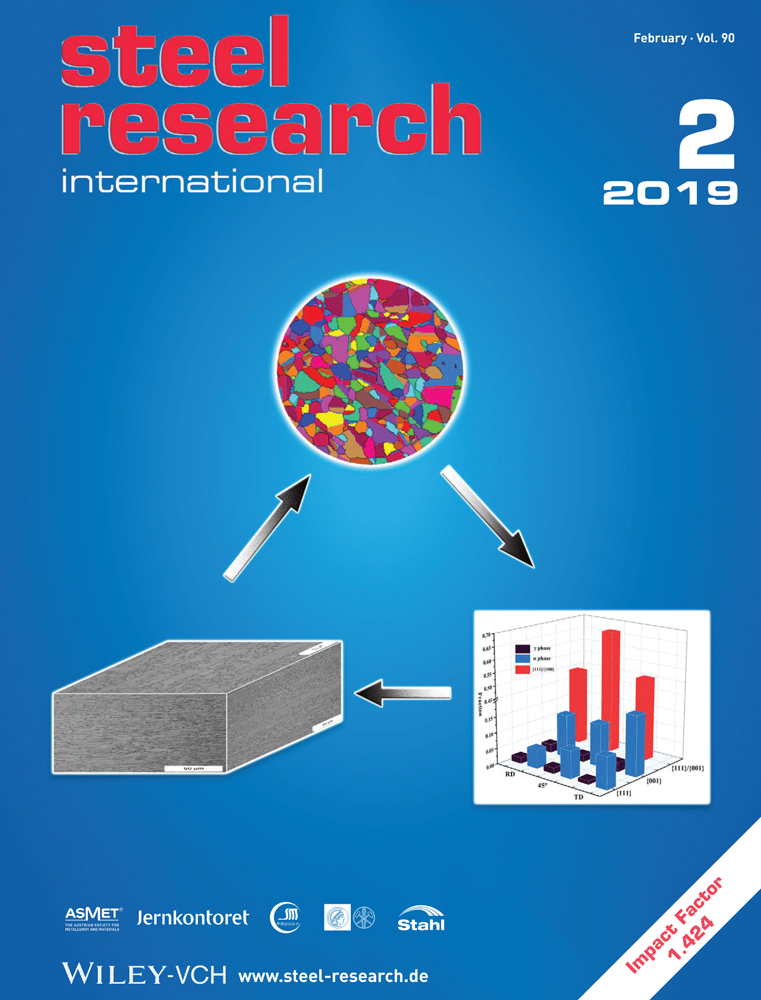Reformation Behavior of Austenite in 2205 Duplex Stainless Steel with Rapid Heat Treatment
Abstract
The reformation behavior of austenite in coarsened ferrite grains of 2205 duplex stainless steel is studied by means of rapid heat treatment process. With the prolongation of peak temperature holding time, ferrite grains coarsen significantly from 200 µm at 1 s to over 1000 µm at 10 min, and the reformation of grain boundary austenite is suppressed while fine equiaxed intragranular austenite is promoted during the subsequent isothermal treatment at 850 °C owing to the reduction of total ferrite grain boundary area. With the decreasing of isothermal temperature, the microstructure evolution of reformed austenite from widmanstatten austenite to acicular austenite and finally to equiaxed austenite is observed, due to the increasing of the nucleation site density. The orientation relationships (OR) between reformed austenite and ferrite vary at different isothermal temperatures. The N-W OR gradually changes into the K-S OR with the increasing of isothermal temperature to lower the coherent elastic strain energy induced in ferrite matrix.
Conflict of Interest
The authors declare no conflict of interest.




